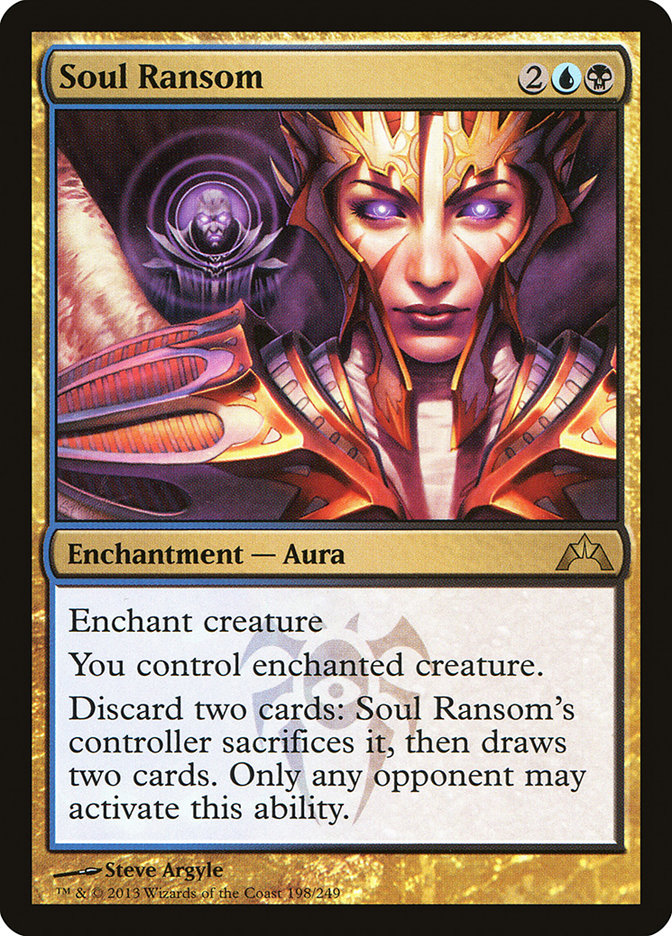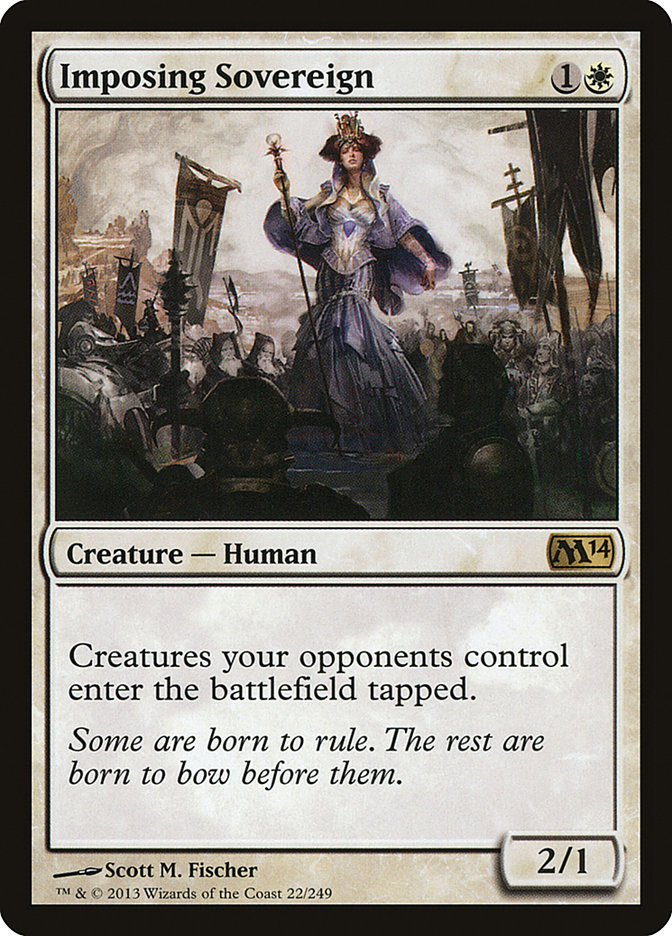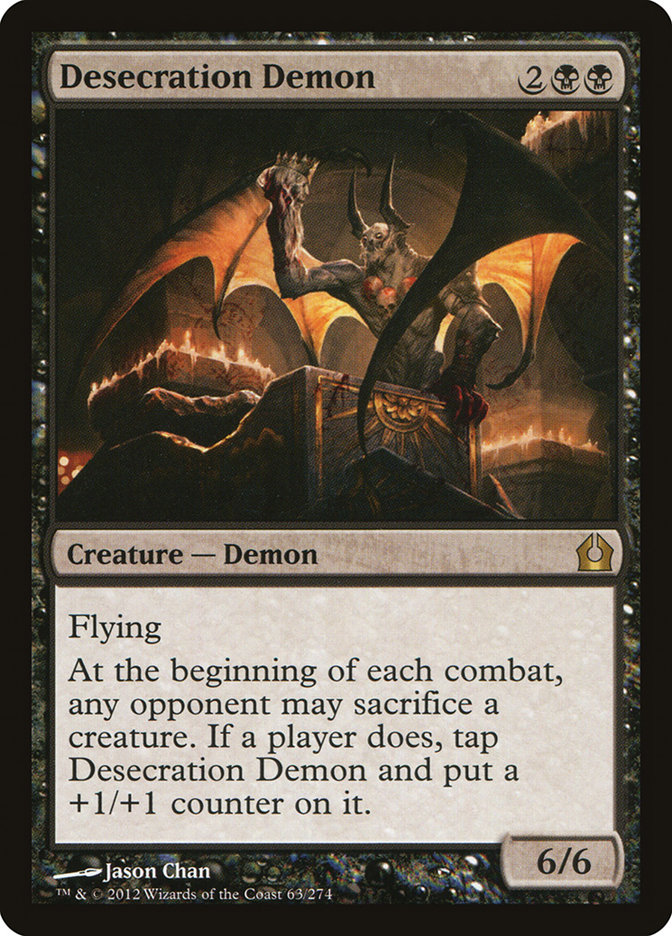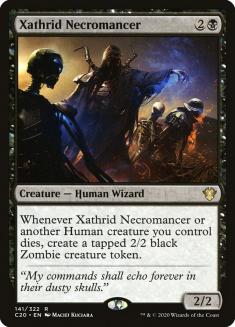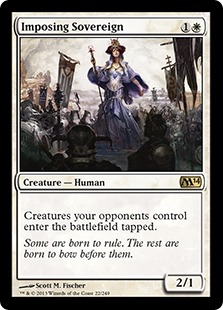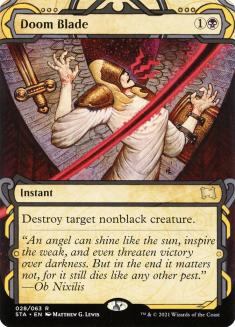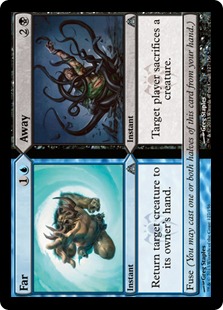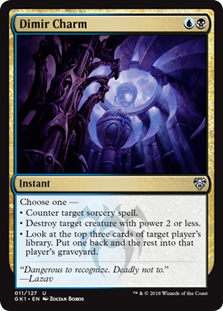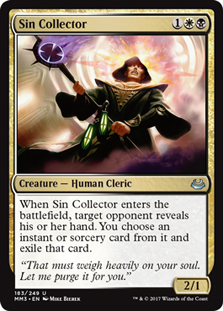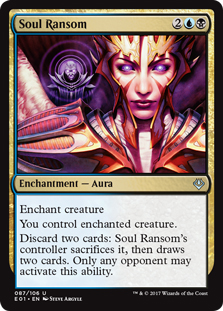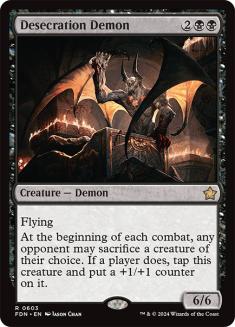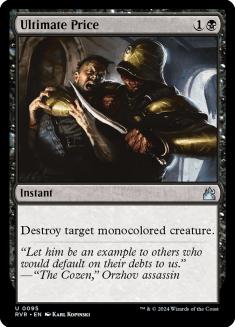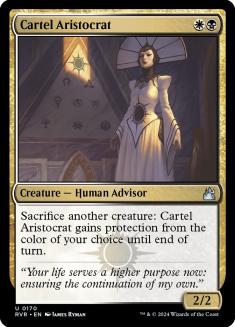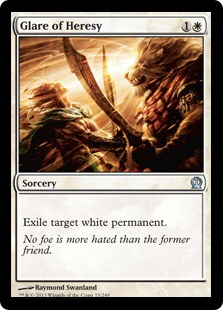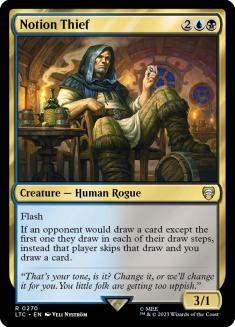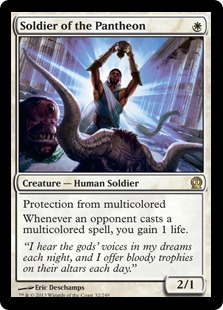I ended up skipping last weekend’s SCG Open Series in Indianapolis due to the very rational fear of Mother Nature. Needless to say, some of my fellow Roanokians decided to embark into the (un)known regardless to do battle in the extremely crowded Indianapolis Convention Center. I don’t know where Brian Braun-Duin and Chris VanMeter get their determination, but I would love to get my hands on whatever back-alley prescriptions they’re taking.
Instead of risking death, I sat in my comfortable apartment playing Magic Online. I was dead set on making Michael Jacob’s G/W Aggro deck a force to be reckoned with before Born of the Gods gets a chance to shake things up. I was winning a decent percentage of my games, but I had that uncontrollable itch that needed some scratching. It was time to brew!
I took another stab at Esper Humans. Not wanting to give up on the archetype, I brewed countless variations of the deck until I stumbled on some old Tom Ross tech. About a month ago Tom toyed around with Soul Ransom as a splash in Mono-Black Devotion. This was supposed to be great tech for the mirror match when the games didn’t come down to Pack Rat, and it did a nice job. It just wasn’t strong enough against the field since it can’t help you’re your behind on tempo. An aggressive opponent could simply discard two cards and keep attacking with nothing in the way.
That isn’t really the case if it’s played on the top of an aggressive curve. Not only is it a huge boost to card advantage if you have a board advantage, but it gets busted alongside Cartel Aristocrat. This two-card combo turns Soul Ransom into straight-up Control Magic!
I put together my fist version and took it all the way to the Top 8 of a Premier Event.
Creatures (21)
- 4 Lyev Skyknight
- 3 Obzedat, Ghost Council
- 2 Vizkopa Guildmage
- 4 Cartel Aristocrat
- 4 Xathrid Necromancer
- 4 Soldier of the Pantheon
Lands (25)
Spells (14)

This list isn’t that far off from the original version. I just replaced Desecration Demon with Soul Ransom and played out the tournament. I thought Ashiok, Nightmare Weaver might be decent in the board, but boy was I wrong! No matter how much I try to make Ashiok work, the card just isn’t good (we’ll get to that decklist a little bit later for a good laugh).
The first thing I found wrong with this list is cards like Whip of Erebos and Vizkopa Guildmage. I thought this combo would be strong enough for grindy games, but that just isn’t how this metagame plays out. Half the decks are devotion based, making it extremely difficult to find time to play cards that don’t disrupt the opponent’s devotion. Whip of Erebos just isn’t a strong enough spell to cast when you are behind and allows the opponent some time to catch up when they’re behind. Lifelink only helps out in combat races, which doesn’t happen very often in the metagame.
The other major problem with the deck was how bad it was against Mono-Blue Devotion. I don’t know if this is common with the original version, but my two losses—one in the Swiss and one in the Top 8—were to Mono-Blue. The games didn’t even seem remotely close.
It was time to give the deck a little bit more power. Supreme Verdict can be a powerful card, but oftentimes it wasn’t enough since it wasn’t a surprise anymore. Xathrid Necromancer also has a much bigger target on its head. I decided to cut Supreme Verdict and Whip of Erebos and become more of a straight-up aggressive deck. This is where I’m at currently:
Creatures (24)
- 4 Lyev Skyknight
- 2 Desecration Demon
- 3 Obzedat, Ghost Council
- 4 Cartel Aristocrat
- 3 Imposing Sovereign
- 4 Xathrid Necromancer
- 4 Soldier of the Pantheon
Lands (25)
Spells (11)
Sideboard

My plan is to work on this deck for the next week and get it to a place I’m comfortable with to play at the SCG Open Series coming up in Columbus and Baltimore. I really think this deck has potential, but I might need some help from you guys with it since it’s very difficult to play and build. To set this up, I want to explain my thought processes about all of my card choices and then how I play each matchup. This is a great opportunity to actually ask for you guys to assist me in winning another Open to get into the SCG Players’ Championship in the first season. After all, I am in third place right now and have a great chance of getting there. Let’s get to work!
Many of the card choices are self-explanatory, such as Cartel Aristocrat; Soldier of the Pantheon; Lyev Skyknight; Xathrid Necromancer; and Obzedat, Ghost Council. These are the heart of the offense and can make boards positions very difficult for many opponents. The other two creatures in the deck are much more difficult to understand.
Now, I know that my creature base ended up exactly the same as the original list, but it took me days of testing to understand why. Both of these creatures seem very situational, and I often found places they just didn’t perform well. It took me a long time to really respect their roles.
Imposing Sovereign is an interesting creature in this deck. It can be one of the best creatures to play on turn 2 when going first because of how easy it is to apply pressure before an opponent can stabilize. The added bonus of slowing down hasted creatures can also help in some racing situations. That said, this card is almost unplayable on the draw. It took me a long time to realize that replacing this card with Thoughtseize when on the draw is not only acceptable but a pretty good trade. In these games you won’t be able to race the opponent so you must disrupt their late-game plays. This is easily done at the cost of two life and a card. I have no issue trading one-for-one early in the game against any devotion-based deck that has little to no card advantage.
Desecration Demon is the main ingredient to beating Mono-Blue Devotion and G/R Monsters. This creature is just too powerful for them to ignore and makes it very difficult for them to slow the game down long enough to let their card advantage kick in. You need to put up a strong board presence against these decks since they’re well equipped with planeswalkers that draw them into spells.
Many of these decks will be expecting Supreme Verdict as a catchup spell, but we’re more in the business of never falling behind. More spot removal, threats, and discard allows us to keep up with them, and hopefully Desecration Demon or Obzedat, Ghost Council finds its way onto the battlefield to help close out the game.
Choosing the correct removal has been an ever-constant battle with this deck. Finding the correct removal is interesting since one of the key pieces is Soul Ransom. This means that cards like Far // Away should be used to a lesser extent since too slow of removal can be costly. I still want access to this card since it’s a great way to gain card advantage when flooding out as well as one of the only answers to a resolved Blood Baron of Vizkopa. Doom Blade and Ultimate Price are pretty important for this deck to be able to get trades in early, allowing the four-and five-drops to do their business.
The sideboard is a work in progress, but I’m at least happy with my sideboard plan against control decks. With the inclusion of Soul Ransom, the deck has to sideboard more cards to be able to get all the dead removal out. I’ve found that Sin Collector and Thoughtseize work nicely to help set up Notion Thief and Obzedat, Ghost Council.
The rest of the sideboard is just an ever-changing mixture of removal. The goal is to make them as efficient as possible while also being useful in as many matchups as possible.
Mono-Black Devotion
Soul Ransom shines brightest in this matchup. It almost always comes down to a grind—both players exhausting resources since both decks are full of removal. Their card advantage is in the form of Underworld Connections, and yours in Xathrid Necromancer and Soul Ransom. The reason our Control Magic spell is so strong is because it will always come down when discarding two cards is difficult. Even if they find the two cards to discard, this means we have an opportunity to use our two cards to pull ahead.
Things almost always come to an end the moment we assemble out combo since they will never get their guy back and either give us a five-for-one or waste more time killing their own creature.
The best way to play this matchup is to get on the board quickly and kill anything important on sight. The cards really speak for themselves in game 1, so there isn’t much I can really say more than that.
Out:
In:
Boarding out Xathrid Necromancer might seem unusual, but it isn’t an important card when both decks have a high density of removal. The only real reason to keep this card in is to have fewer white creatures in your deck to reactively fight against Lifebane Zombie, but I’ve found it not to be the biggest concern.
The reason to board in Sin Collector is because you will sometimes snag a removal spell. If this happens, you’re one card closer to shutting them down with one of your four Soul Ransoms. Trust me—this card is bonkers when both players have four Thoughtseizes since it shines in low-resource games.
The best way to play sideboarded games is to not get too aggressive. We have more powerful spells for the late game and way more ways to grind them out.
Mono-Blue Devotion
The best way to play this matchup is to consider yourself the aggressor. This can be difficult at times, but given enough time they will be able to take the game over with Thassa, God of the Sea; Bident of Thassa; or Jace, Architect of Thought. You have to put them on the back foot and make sure these cards are not creating card advantage since we don’t have any real way to catch up.
Out:
In:
Trading doesn’t happen too often in this matchup since most of their creatures have unique power and toughness, so we don’t need our Xathrid Necromancers. The way we win this matchup is try to make early trades when possible, but that mostly revolves around removal spells. Soul Ransom; Desecration Demon; and Obzedat, Ghost Council come in after a while to help speed up a victory.
R/W Devotion
The only advice I can give you in this matchup is to not die to Stormbreath Dragon. I constantly tell myself this yet almost solely lose to the card. The rest of their deck is easily dealt with by our removal spells, but there just aren’t many for the Dragon. Make sure to save a Doom Blade for it.
Controlling their devotion is often important since they play so many Nykthos, Shrine to Nyx. Keeping them at a low enough devotion allows us to have time to set up for their Stormbreath Dragons and overloaded Mizzium Mortars. Again, trade when possible in the early game and let the late-game monsters finish up the rest.
This is a matchup where I keep Imposing Sovereign on the play but replace it with Thoughtseize on the draw. Other than that you cut the Xathrid Necromancers due to them boarding in Anger of the Gods and bring in all of the removal you can find along with the third Desecration Demon.
U/W Control
Game 1 is often extremely difficult given the density of maindeck removal. Sometimes they get caught off guard by a Xathrid Necromancer or Obzedat, Ghost Council, but I put the win percentage of this game 1 around 25%.
This all changes after sideboard though.
Out:
In:
Sideboarded games play out much differently since we’re not under pressure to end the game as quickly as possible. We have many heavy-hitting cards and ways to break the game wide open like Notion Thief. The trick is to not cast a Thoughtseize in the early turns when you already have Notion Thief. It’s much more potent to cast everything else until the opponent passes with six-plus lands untapped. This is when you spend one of your five mana on Thoughtseize and wait patiently for them to respond with Sphinx’s Revelation. Cast your four-mana Human and watch them vomit all over the table as you not only draw a handful of cards but still get to take something from theirs.
I hope they enjoyed that three life!
G/R Monsters
This is yet against another matchup where board presence is important. Getting creatures onto the board quickly is necessary to combat their many planeswalkers. The nice thing about this matchup is that our removal lines up well against their whole deck and games can easily be taken over by Desecration Demon.
Out:
In:
It’s important to view sideboarded games differently than game 1s. Many G/R Monsters decks are now running Chandra, Pyromaster. This planeswalker alongside Sylvan Caryatid makes it very difficult for these spells to do any real damage. It’s much better to turn into more of a controlling deck and try to disrupt them long enough to get to the mid to late game.
I’ll be doing my best to play some Magic somewhere this weekend. I might end up in Philadelphia for a Pro Tour Qualifier or just stay in town and attempt to win a SCG Invitational Qualifier. I know I already have a penguin pin, but it longs for a companion. I also wouldn’t mind getting five more Open Points in my journey to the SCG Players’ Championship!
I look forward to hearing your opinions about this deck. Don’t be shy—tell me you don’t like the deck if that’s the truth. This year is all about results. I don’t care if my form is terrible; I just want to stick my landing!

